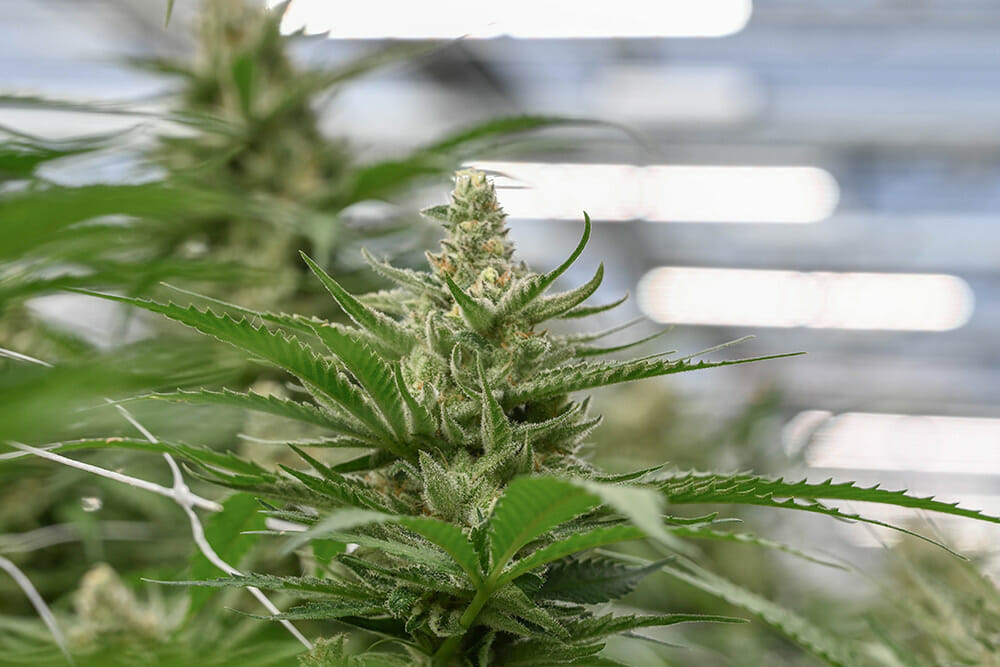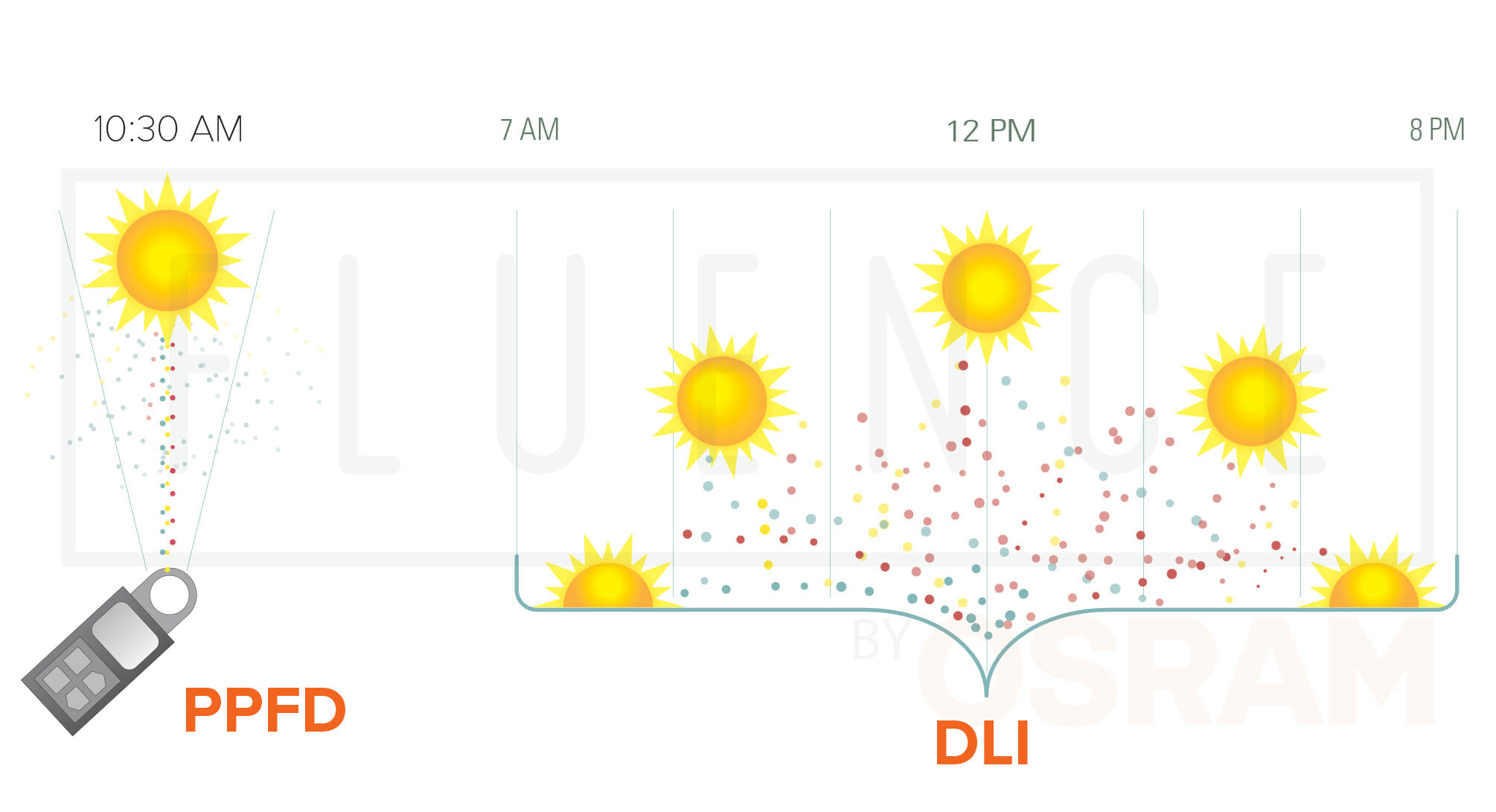
06 Apr Understanding DLI: How to Leverage Daily Light Integral to Optimize Your Harvest
Cultivators are becoming more sophisticated about ensuring optimal plant growth and are learning more about the daily light integral, or DLI, associated with their grow. To help growers in their quest for information, Fluence recently offered a webinar that was attended by cultivators from around the world.
DLI is the measure of photosynthetically active radiation (PAR) that is received by a specific area of plant canopy in a 24-hour period, Figure 1 visualizes the difference between DLI and PPFD. Casey Rivero, Cannabis Solutions Architect at Fluence, shared with the webinar group why maximizing DLI is important:
Production
Cycle time
Quality
Consistency
Potency
Put together, of course, these benefits add up to increased profits.

Casey explained to webinar attendees there is a point at which a plant reaches light saturation, after which time the plant will receive no benefit from additional light. This light saturation point differs not only among species, but among cultivars and specific genetics, as well. Experienced growers are careful to identify the precise DLI that provides each plant group with maximum growing potential without providing too much light, which can have adverse effects on the plant as well as on resource management.
Webinar participants learned calculating DLI in a greenhouse setting vs. an indoor setting exclusively illuminated by fixtures is quite different. Another important consideration is a plant’s optimal DLI changes over the life of the plant, as it enters and exits various growth phases.
Among the biggest takeaways from the webinar is that there are no one-size-fits-all guidelines. Each grow is unique, and cultivators must work to find the optimal combination of factors to ensure the biggest chance of success at their farms. Casey recommends evaluating your own lighting strategy, using a meter to check your light intensity and consistency, running trials and seeking help from lighting experts, such as those at Fluence.
Following the presentation, Casey answered questions from the webinar participants. Here’s a sampling:
Q: At what light intensity do you usually observe Photosystem II damage or deactivation? What peak levels should be avoided?
A: We’ve noticed that different cultivars respond differently to light intensities. Some may reach a light saturation point a lot faster than others. At one of my farms, I had a Panama Red variety that would not produce anything if I moved my light level over about 900 PPFD, no matter how much extra CO2 I gave it, no matter how much extra water and mineral nutrients I gave it, that plant peaked out when I gave it a treatment of 900 PPFD of light. What that told me is that the genetic limitation might have been reached right there, and every plant has a genetic limitation. And to say there is a baseline standard limitation for all cannabis crops — we’re not there yet. I hope, within the next few years, we’ll be able to come up with more concrete values of minimums and maximums.
Q: What is the optimal or maximum DLI that we should be using for flowering cannabis?
A: We are doing a lot of research to try to understand this. In some of our research crops, we have been pushing past 50, past 55 DLI, and seeing excellent results. But then again, it really is genetic- and system-dependent. We really don’t have a general maximum yet.
Q: Are there ways to change DLI outside of adding or subtracting light or changing light height indoors?
A: DLI is light intensity mixed with timeframe. Any time you manipulate one or the other or both of those, it will change that DLI value. So lowering the lights will raise the intensity of that photon density on that plant, which will elevate that DLI. There are certain things you can do within your program to manipulate that DLI level, which is either changing the light intensity itself or the timeframe at which those lights are providing photons to the plants.
Q: Can DLI modify the taste or chemical composition of your products?
A: Absolutely. Your plants are accumulating what is being given to them and continually responding to that. And so if your plant is continually not getting an adequate amount of some source that it needs to succeed in its physiological production, then it is going to lack in all the capacities — in cannabinoid and terpene production, in the plant and flower production, in the health, strength and rigidity of the plant.
To read more on DLI, read the article “Introducing the concept of DLI to the world”.


